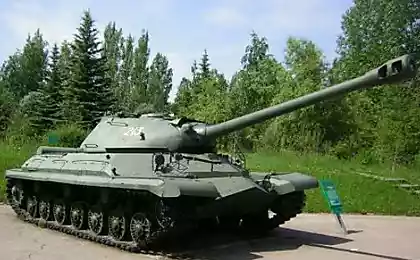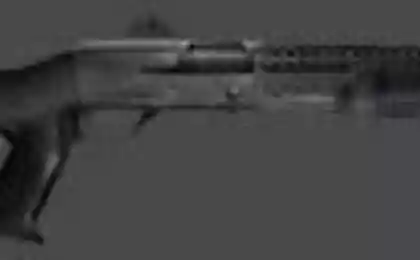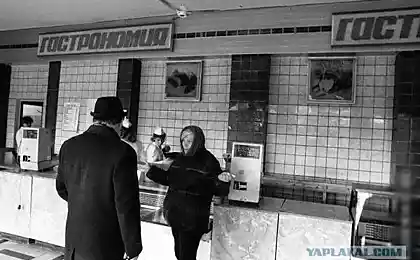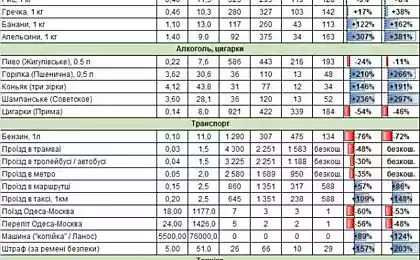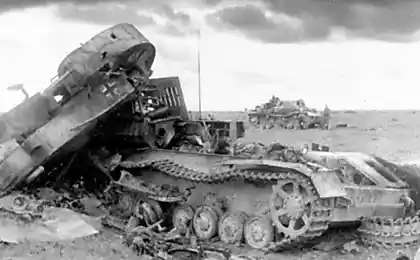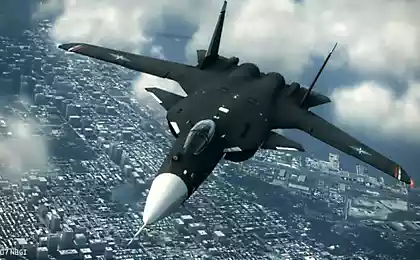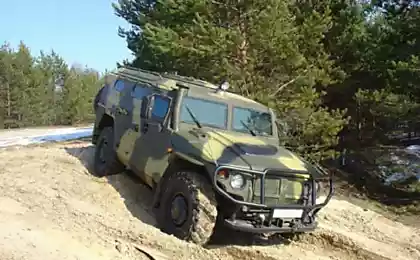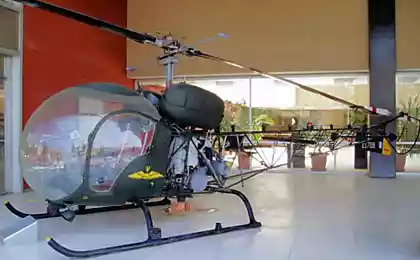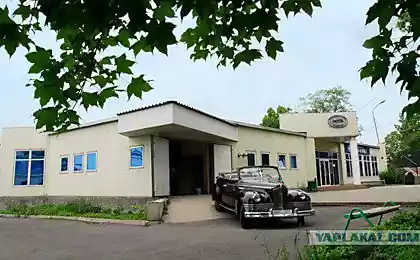775
Armament prewar USSR
Let's start with the T-27 Wedge
Housing wedgies consisted of armor rolled sheets (10 mm - the bow, side and stern, 6 mm - roof and 4 mm - bottom), are connected by rivets and partly by electric welding. Leaves body height up to 400 mm from the bottom, [next] connected with the use of canvas pads, which ensures water resistance machine body when fording. Wedge was armed 7 62-mm machine gun DT sample 1929 1764 ammunition cartridge. 28 stores for the machine gun placed on the shelves, installed in the cartridge boxes and submitted to special loading (rope) mechanism. Means of internal and external communications were absent; link between the individual machines in the unit is maintained with the help of signal flags, which was typical for the time.
The machine was installed four four-cylinder petrol engine with liquid cooling GAZ-AA (Ford-AA) power of 40 hp, allows a speed up to 42 km / h. Cruising on the highway is 110 km, and in the area - 60 km. Combat weight - 2, 7 m. The crew consisted of two people: commander, gunner and the driver.
weight: 2700 kg;
Crew: 2 persons;
Length: 2, 60 m;
width: 1, 82 m;
Height: 1, 44 m;
Engine: Carburetor "Ford-AA ';
Maximum speed: 42 km / h;
power reserve: 120 km;
Armament: 7 62-mm machine gun DT;
Ammo: 2,500 rounds;
Armor: 10 mm.
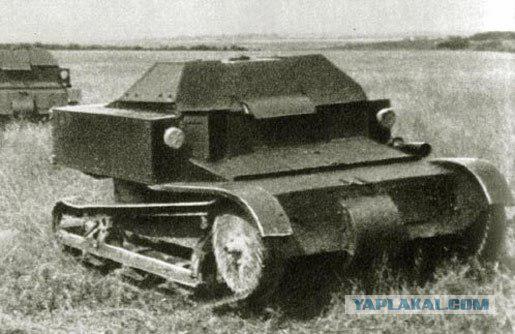
2 Island
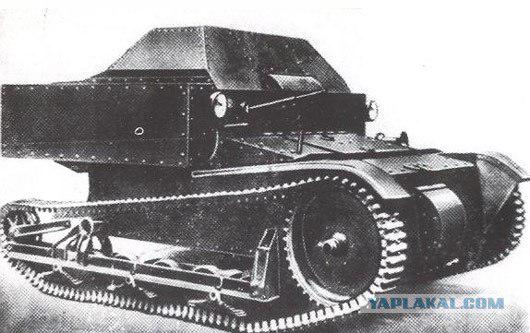
3-ri
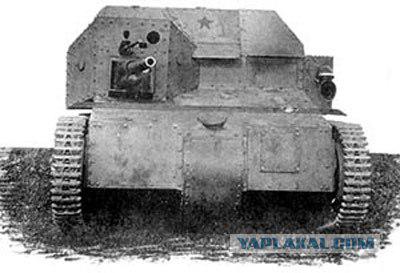
4-D
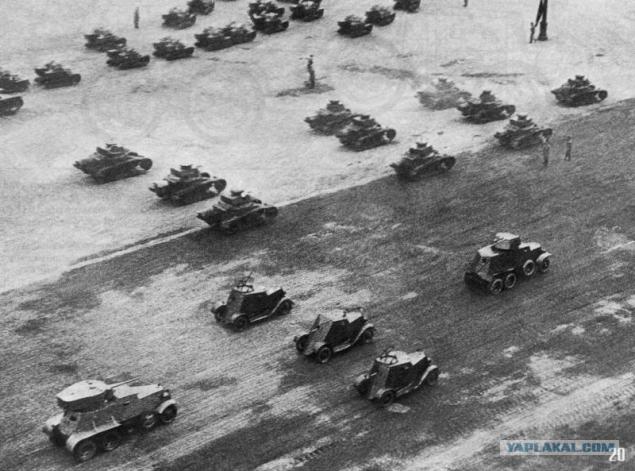
5 Th
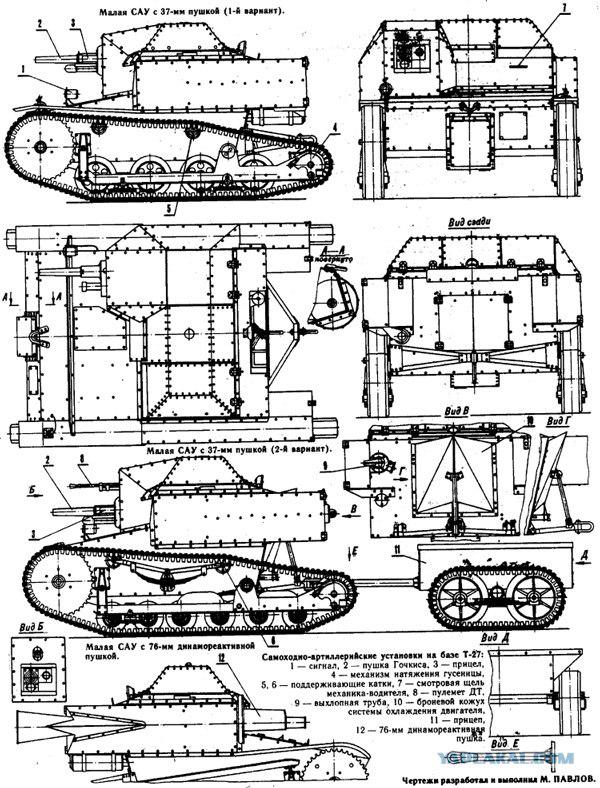
Light Tank on MS-1 (T-18)
Armor plate shell tank connected to the frame by riveting. In the front (front) of the chassis housed tricuspid driver's hatch. This arrangement of a dozen years of its implementation identified in the subsequent production of tanks. Under the turret in the roof make a circular cut-out and in the middle of it on the sides of the tower, placed armored plug fuel tanks necks. Above the engine compartment was detachable armored covers, and rear body armor plate had holes. Through them to power and cool the motor installation incoming air. Removable inclined sheet aft bolted the "tail" - a device that makes it easy to overcome the ditches and trenches.
Turret MC-1 originally had a hexagonal shape. When upgrading in 1930, the side faces of the rear part was replaced with a rectangular niche, the back of which leans back on hinges. It fit artvystrelov and ammunition. On the tower body is established through the ball joint, and the vertical movement is limited to three grips, it serves as a stopper of the tower in the stowed position. In the right front and left rear edges placed holes for the machine gun in a ball bearing, and the left front edge - a rectangular cutout for the half ball bearing gun. The roof of the tower was carried aperture defined along the perimeter shaped bronelistami with slits for observation. This add-constructors called observation tower. Above it was closed spherical cap. For ventilation in the side of the tower there is a small hatch, the closing or rectangular (on the tanks of the sample 1930) cover. The rear face of the sample tower in 1928 there was a loophole to set the gun to fire back. The tank model 1930 the tower was carried out with the aft rectangular niche without rear rectangular loopholes. Armor plate hull and turret had a thickness of 16, and the roof and the bottom 3 mm. At the bottom of the emergency exit hatch was located. In tankeT-18M maximum armor thickness reached 14 mm.
As with previous tanks type "M", the T-18 was armed with a short-37-mm gun and machine gun mount. The guns were provided with hand grenades steel and cast iron buildings in the amount of 104 shots, and the machine gun ammunition in 2016. The gun was mounted in the mantle result. It is allowed to change the angle of the horizontal crosstalk within 35 degrees and vertically with an angle of elevation of 30 degrees and reduce -8 degrees. Gun sighting device consisted of a diopter and front sight mounted in the mantle result in the exit hole for aiming. To point a weapon at a target, the gunner using shoulder rest moved it horizontally and vertically. If it was necessary to turn the tower, he did it with a lever with his left hand resting pre-backs in its wall.
Machine-gun armament on the T-18 is a special system installation V.Fedorova gunsmiths, and D.Ivanova G.Shpagina. The basis of it was laid under the gun V.Fedorova 6, 5 mm cartridge. Two machine guns were located in the trunk of a single receiver placed in a ball bearing. Its locking device on the tanks of the sample in 1927 allows to carry a machine gun in the rear face of the tower. Eating it was carried out from two stores with a capacity of 25 rounds each. He had shoulder rest, pistol grip and diopter sight.
When upgrading the tank was installed 7, 62-mm tank gun V.Degtyareva (DT) with a round magazine for 6h cartridge. It is a modification of the DP light machine gun. The main difference from the prototype was the lack of housing in the trunk and the introduction of sliding metal butt. With it provides for the regulation as it is for the convenience of the length of the weapon and the reduction of the overall length of the machine gun when picked up tanks in marching motion. Diopter sight DT could be set for firing at a range of 400, 600, 800 and 1000 meters. The spherical support can be direct gun in a horizontal plane in the range of 64 degrees and 30 degrees in the vertical and -8 degrees. Circular fire from tank weapons achieved by rotating the entire tower. Surveillance equipment. As already mentioned, the crew of the car kept watch through the narrow peepholes. The commander could watch through a circular slit observation tower. The driver was looking forward into the slot formed in the hatch (hinged panel). With intensive enemy fire impact it could close the damper with a narrow cross-shaped slits or fully armored shutter. Left and right, he watched through peepholes in the hull sides bevel. Only the optical device is a periscope, located in the folding panel driver's hatch and armored eye & quot ;, as it is called designers. The periscope monocular type, top closed armored housing and cover.
With regard to the chassis, in contrast to the tanks of "Reno" MS-1 had melkozvenchatye caterpillars which provides better traction. On each side were three pairs of the trolley spring buffer with rollers. They had a rubber band. Another pair of rollers supported by the lower branch of the inclined tracks installed in an inclined damper located. The upper branch of the caterpillars to slide on supporting rollers, the front of which was a pair of leaf spring suspension. Track tension produced the steering wheel, the designers called "sloth." It is attached to the crank and turning the rod thrust spacer. It could shift forward or backward, and this provides the necessary tension.
In tanks of the MS-1 (T-18) was used single-row air-cooled carburetor engine with four cylinders arranged vertically. He has combined in one unit with the gearbox. On sock crankshaft installed to connect the starting clutch transmission shaft through which force is transmitted from the inner winding of the handle, brought into engagement by pressing the pedal. Besides, he could start by the electric starter. Once the motor is gaining momentum, the magneto is switched off and the system equipment includes a starter dynamo (generator).
Unlike tanks later samples, 18 had a T-type automobile muffler. Transmissions from the T-18 is combined with a friction clutch and a satellite providing a different speed of rotation of tracks when you turn the machine. She had four forward and one back. From gearbox torque transmitted to the drive wheel brake turn.
Current sources, consumers and wiring on the T-18 was designed for a voltage of 6 volts. Pack is a 6-volt battery, magneto and dynamo magnetos, consumers - lamp, buzzer with adjustable sound intensity, tail lamp, flashlight and portable electrical panel lamp (2 pieces). In the first series of tanks performed by wiring adopted at the time the system "Bergman tubes", and later - the armored cable for a single-circuit, except for the headlights and horn. High voltage on spark plugs supplied through the distributor. It should be noted that the second series of machines feed system equipped with heaters air.
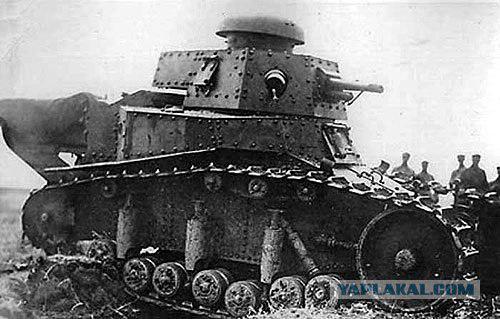
7-NIL
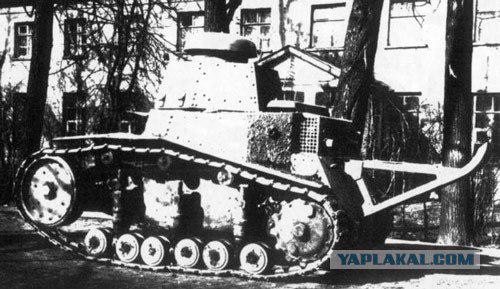
8-NIL
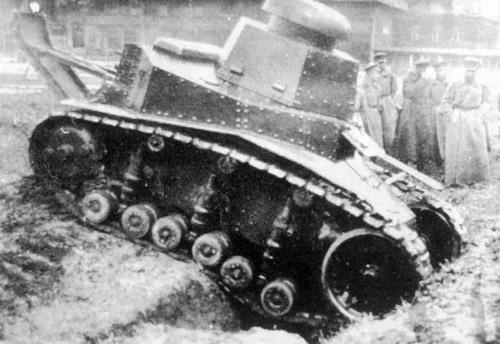
9 Th
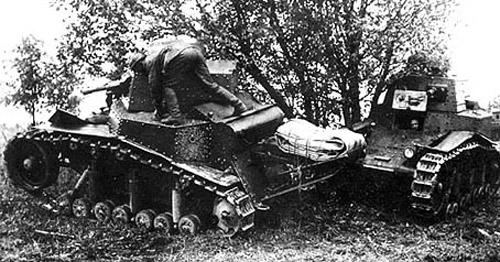
10 Th
BA-27 and T-18 (USSR) Bobruisk maneuvers 1929
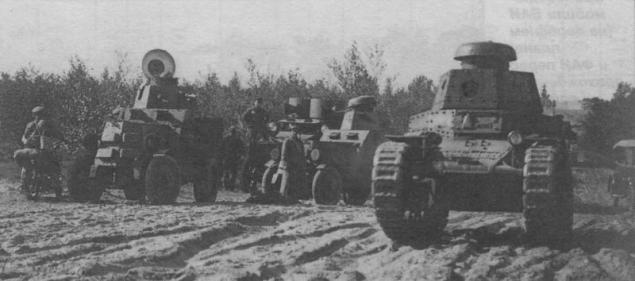
11 Th
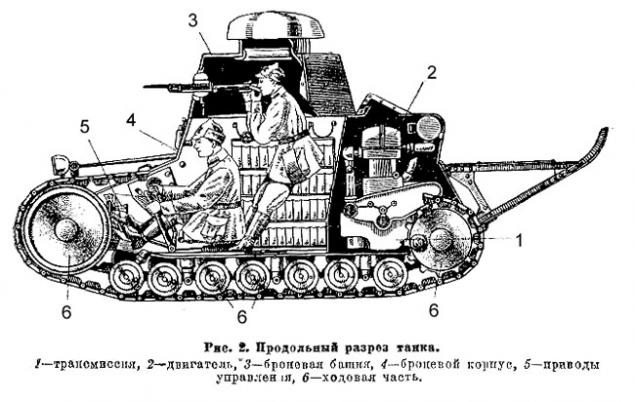
12 Th
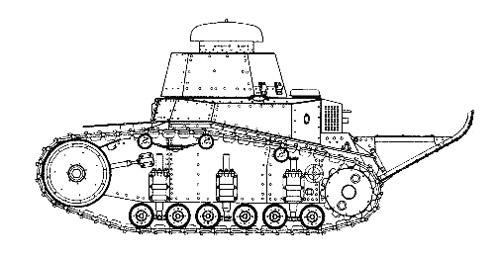
13 Th
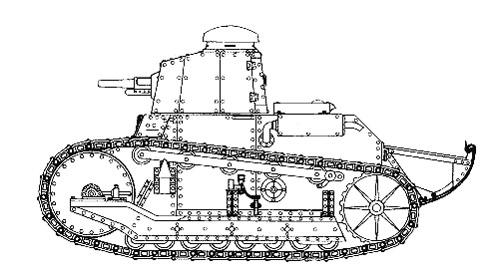
14 Th
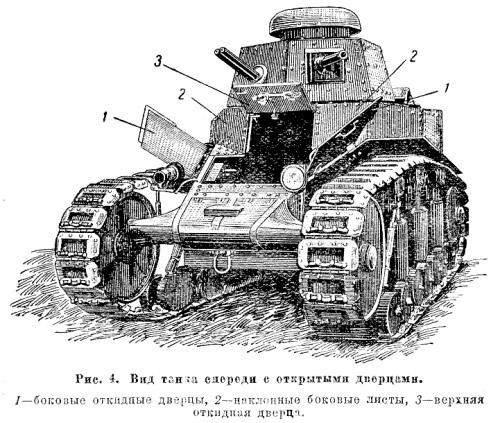
15 Th
If you like the theme I promise to continue to be more "news" equipment and weapons!
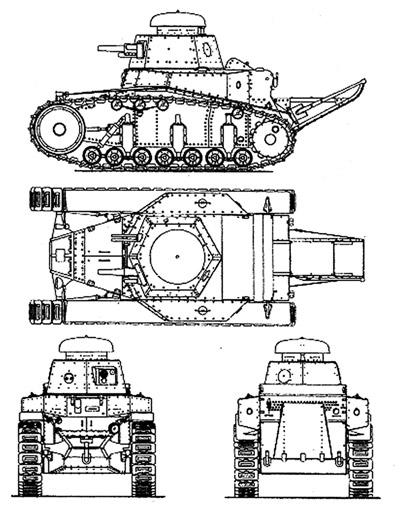
Source:
Housing wedgies consisted of armor rolled sheets (10 mm - the bow, side and stern, 6 mm - roof and 4 mm - bottom), are connected by rivets and partly by electric welding. Leaves body height up to 400 mm from the bottom, [next] connected with the use of canvas pads, which ensures water resistance machine body when fording. Wedge was armed 7 62-mm machine gun DT sample 1929 1764 ammunition cartridge. 28 stores for the machine gun placed on the shelves, installed in the cartridge boxes and submitted to special loading (rope) mechanism. Means of internal and external communications were absent; link between the individual machines in the unit is maintained with the help of signal flags, which was typical for the time.
The machine was installed four four-cylinder petrol engine with liquid cooling GAZ-AA (Ford-AA) power of 40 hp, allows a speed up to 42 km / h. Cruising on the highway is 110 km, and in the area - 60 km. Combat weight - 2, 7 m. The crew consisted of two people: commander, gunner and the driver.
weight: 2700 kg;
Crew: 2 persons;
Length: 2, 60 m;
width: 1, 82 m;
Height: 1, 44 m;
Engine: Carburetor "Ford-AA ';
Maximum speed: 42 km / h;
power reserve: 120 km;
Armament: 7 62-mm machine gun DT;
Ammo: 2,500 rounds;
Armor: 10 mm.

2 Island

3-ri

4-D

5 Th

Light Tank on MS-1 (T-18)
Armor plate shell tank connected to the frame by riveting. In the front (front) of the chassis housed tricuspid driver's hatch. This arrangement of a dozen years of its implementation identified in the subsequent production of tanks. Under the turret in the roof make a circular cut-out and in the middle of it on the sides of the tower, placed armored plug fuel tanks necks. Above the engine compartment was detachable armored covers, and rear body armor plate had holes. Through them to power and cool the motor installation incoming air. Removable inclined sheet aft bolted the "tail" - a device that makes it easy to overcome the ditches and trenches.
Turret MC-1 originally had a hexagonal shape. When upgrading in 1930, the side faces of the rear part was replaced with a rectangular niche, the back of which leans back on hinges. It fit artvystrelov and ammunition. On the tower body is established through the ball joint, and the vertical movement is limited to three grips, it serves as a stopper of the tower in the stowed position. In the right front and left rear edges placed holes for the machine gun in a ball bearing, and the left front edge - a rectangular cutout for the half ball bearing gun. The roof of the tower was carried aperture defined along the perimeter shaped bronelistami with slits for observation. This add-constructors called observation tower. Above it was closed spherical cap. For ventilation in the side of the tower there is a small hatch, the closing or rectangular (on the tanks of the sample 1930) cover. The rear face of the sample tower in 1928 there was a loophole to set the gun to fire back. The tank model 1930 the tower was carried out with the aft rectangular niche without rear rectangular loopholes. Armor plate hull and turret had a thickness of 16, and the roof and the bottom 3 mm. At the bottom of the emergency exit hatch was located. In tankeT-18M maximum armor thickness reached 14 mm.
As with previous tanks type "M", the T-18 was armed with a short-37-mm gun and machine gun mount. The guns were provided with hand grenades steel and cast iron buildings in the amount of 104 shots, and the machine gun ammunition in 2016. The gun was mounted in the mantle result. It is allowed to change the angle of the horizontal crosstalk within 35 degrees and vertically with an angle of elevation of 30 degrees and reduce -8 degrees. Gun sighting device consisted of a diopter and front sight mounted in the mantle result in the exit hole for aiming. To point a weapon at a target, the gunner using shoulder rest moved it horizontally and vertically. If it was necessary to turn the tower, he did it with a lever with his left hand resting pre-backs in its wall.
Machine-gun armament on the T-18 is a special system installation V.Fedorova gunsmiths, and D.Ivanova G.Shpagina. The basis of it was laid under the gun V.Fedorova 6, 5 mm cartridge. Two machine guns were located in the trunk of a single receiver placed in a ball bearing. Its locking device on the tanks of the sample in 1927 allows to carry a machine gun in the rear face of the tower. Eating it was carried out from two stores with a capacity of 25 rounds each. He had shoulder rest, pistol grip and diopter sight.
When upgrading the tank was installed 7, 62-mm tank gun V.Degtyareva (DT) with a round magazine for 6h cartridge. It is a modification of the DP light machine gun. The main difference from the prototype was the lack of housing in the trunk and the introduction of sliding metal butt. With it provides for the regulation as it is for the convenience of the length of the weapon and the reduction of the overall length of the machine gun when picked up tanks in marching motion. Diopter sight DT could be set for firing at a range of 400, 600, 800 and 1000 meters. The spherical support can be direct gun in a horizontal plane in the range of 64 degrees and 30 degrees in the vertical and -8 degrees. Circular fire from tank weapons achieved by rotating the entire tower. Surveillance equipment. As already mentioned, the crew of the car kept watch through the narrow peepholes. The commander could watch through a circular slit observation tower. The driver was looking forward into the slot formed in the hatch (hinged panel). With intensive enemy fire impact it could close the damper with a narrow cross-shaped slits or fully armored shutter. Left and right, he watched through peepholes in the hull sides bevel. Only the optical device is a periscope, located in the folding panel driver's hatch and armored eye & quot ;, as it is called designers. The periscope monocular type, top closed armored housing and cover.
With regard to the chassis, in contrast to the tanks of "Reno" MS-1 had melkozvenchatye caterpillars which provides better traction. On each side were three pairs of the trolley spring buffer with rollers. They had a rubber band. Another pair of rollers supported by the lower branch of the inclined tracks installed in an inclined damper located. The upper branch of the caterpillars to slide on supporting rollers, the front of which was a pair of leaf spring suspension. Track tension produced the steering wheel, the designers called "sloth." It is attached to the crank and turning the rod thrust spacer. It could shift forward or backward, and this provides the necessary tension.
In tanks of the MS-1 (T-18) was used single-row air-cooled carburetor engine with four cylinders arranged vertically. He has combined in one unit with the gearbox. On sock crankshaft installed to connect the starting clutch transmission shaft through which force is transmitted from the inner winding of the handle, brought into engagement by pressing the pedal. Besides, he could start by the electric starter. Once the motor is gaining momentum, the magneto is switched off and the system equipment includes a starter dynamo (generator).
Unlike tanks later samples, 18 had a T-type automobile muffler. Transmissions from the T-18 is combined with a friction clutch and a satellite providing a different speed of rotation of tracks when you turn the machine. She had four forward and one back. From gearbox torque transmitted to the drive wheel brake turn.
Current sources, consumers and wiring on the T-18 was designed for a voltage of 6 volts. Pack is a 6-volt battery, magneto and dynamo magnetos, consumers - lamp, buzzer with adjustable sound intensity, tail lamp, flashlight and portable electrical panel lamp (2 pieces). In the first series of tanks performed by wiring adopted at the time the system "Bergman tubes", and later - the armored cable for a single-circuit, except for the headlights and horn. High voltage on spark plugs supplied through the distributor. It should be noted that the second series of machines feed system equipped with heaters air.

7-NIL

8-NIL

9 Th

10 Th
BA-27 and T-18 (USSR) Bobruisk maneuvers 1929

11 Th

12 Th

13 Th

14 Th

15 Th
If you like the theme I promise to continue to be more "news" equipment and weapons!

Source:

